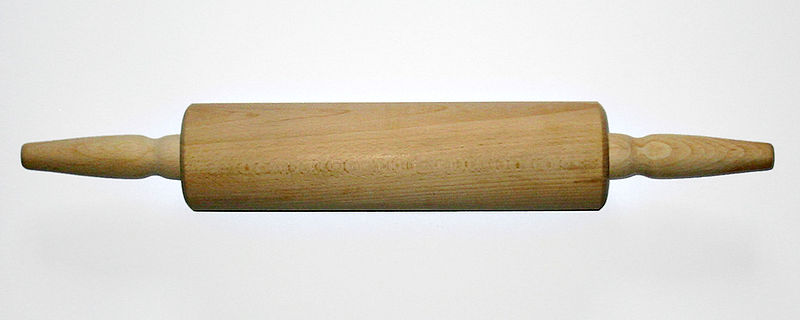Hannah - So, my top paper for month is to do with electrically tweaking brains to induce creativity and been published in the Journal of Cognitive Neuroscience by Sharon Thompson-Schill and her colleagues at the University of Pennsylvania.
So, they did this really quite neat experiment. They took 48 volunteers and they presented them with everyday objects.
In fact actually David, I'm going to make you one of the volunteers for this experiment. I'm going to present you with an everyday object. I'm going to ask you to tell us what it is and what you would do with it, and then I want you to think outside the box, and just off the top of your head, tell me other things that you could do with this particular object. Ready? So, I'm presenting David with a picture of - I'm going to turn on a piece of paper now. David, what is this and what would you do with it?
David - It's a rolling pin and I guess you'd bake with it, so you can roll  out pastry. That's the kind of conventional task I guess.
out pastry. That's the kind of conventional task I guess.
Hannah - And so, what else could you use it for outside the kitchen?
David - Well, you could hit someone over the head with it, you could use it as a rounder's bat, if you heat it up, you could use it as an iron. If it's made of wood, you could burn it and have it as a source of heat.
Hannah - So, would you say that you're creative?
David - I don't know. Not really. I find it very difficult to come up with those out-of-the-box solutions right on the spot there like that, but I came up with some reasonable ones, I think.
Hannah - Yeah, I think you did pretty well.
So, what the researchers that published this paper wanted to do was, they wanted to find out if they could make people more creative. So, come up with more out-of-the-box creative ways of using that rolling pin or other devices. So, in order to foster creativity in their volunteers, they decided to electrically shock, apply a small electric current, just 1.5 milliamps or 1.5 thousandth of an amp of current to the left side of their brains and also had a control group where they applied the same current to the right side of the front of the brain, and also, a control group that just had this placebo effect. So, they just had a very small electric stimulus right in the middle, just for a very small amount of time.
David - So, why would you want to look at the left versus right side of the brain? What's the impetus for doing that?
Hannah - So, they were stimulating the pre-frontal cortex, the bit just behind your forehead that's involved in cognitive thoughts - so learning, reasoning, planning, flexibility, and thought. And the left side of the brain, the left hemisphere is thought to be involved in more linear kind of thought and the right side is thought to be involved in more kind of global kind of creative thinking.
David - So, what did the researchers find from this experiment.
Hannah - Well amazingly, they did see quite a dramatic increase in the creativity as measured by the task that we just demonstrated, when they were applying a small inhibitory electrical current to the left side of the brain - so, by inhibiting the left pre-frontal cortex, they actually fostered more creativity in these volunteers.
David - So, what does that tell us about the way that the brain is setup to come up with creative ideas then?
Hannah - Scientists think that the pre-frontal cortex and in particular, the left side is usually involved in filtering information and kind of dampening down how your brain works. So, this study really unifies that hypothesis.
David - Excellent! That's really interesting.
Hannah - So, do you think we should all wander around with little electrical thought caps on our heads when we need to be creative?
David - Maybe and I was thinking a lot of kind of companies seem to value people who can think outside the box. So, I'm interested to see what the implications of this kind of research would have on how people view creativity and whether you can force somebody to be creative when they don't think they are.
Hannah - Hummm, maybe teachers can bring it into art classes?
David - Yeah, it would certainly make me better at art, I think!










Comments
Add a comment